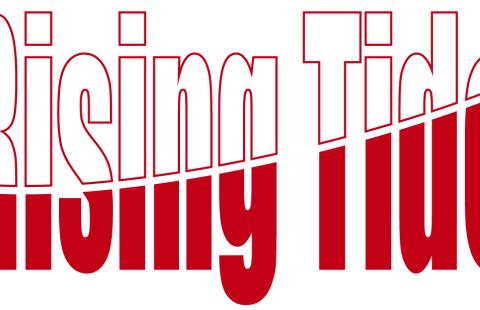What were the specific goals of this creative economy project? Describe the community development challenge or opportunity that your project was designed to address:
With a regional footprint, the Coalition is intensely aware of and capitalizes on the diversity within the region. The Rising Tide Series provides a regional lens to find common ground and leverage differences. The Coalition serves as a regional platform to identity common ground that unites the twenty-two municipalities through the arts, cultural, and heritage assets, which range in size and scale.
Our Rising Tide project aimed to foster a collaborative environment for arts and culture, and by extension our communities, to thrive in Southeastern CT. The project brought together our partners—municipal, community, business, education, tribal, military, and tourism sectors—and provided opportunities for collaboration, capacity building, information sharing, and addressing common challenges within the arts, cultural, heritage, and creative sector of southeastern CT.
Cultural Conversations are small, informal meetings that invite specific sub-sector groups to come together from across the region or with specific commonalities. These meetings bring together like minds, like projects and like missions. These meetings provide vital information to us and their peers in the form of critical issues, trends, and insights affecting their organizations and businesses so that the Cultural Coalition can represent the sector locally, regionally, and statewide.
Cultural Summits are marketed to all of our Partners and to the public. They are intended to address larger topics and critical issues that affect a majority of our Partners for professional development. The Summits focus on providing informative and proactive panel discussions, presentations, and educational forums.
The Rising Tide Series creates an information pipeline to gather information from our partners, respond to needs by delivering tools and resources, and offer models of innovative solutions. The Rising Tide Series unites the creative community. The objective of the Rising Tide Series is to establish networks, roundtables and platforms for increased collaborations to benefit our Partners, their audiences and our region.
With the Coalition acting as a catalyst and encouraging partnership through the Rising Tide activities, the arts and heritage organizations and businesses that operate in the creative sector are realizing that there are economies of scale to working together and are beginning to embrace partnering on a variety of levels. The Rising Tide project has produced regional initiatives and helped to meet a goal of raising the profile of the arts, cultural and creative sector in our region.
If the goals change over time, please describe how:
The goals for this project evolved and changed. Originally, we designed our Cultural Conversations to bring together specific sub-groups of our partnership, including museums, libraries, historical societies & sites, galleries, arts centers, artists, communication arts, etc. Through the discussions at the Cultural Conversations, vital issues were identified across the sector and turned into one-time events, Cultural Summits, designed to address those issues.
While the Cultural Conversations were productive in many ways, we found that some meetings turned into on-going roundtables and others never gelled. Further, most of the groups benefitted from having a project to focus on and unite the group, while a few groups found it more productive to meet informally without a project to work on. Therefore, we have had to allow for the goals themselves to change over time.
Who was involved in this project and what did they do? (be sure to include the partners from outside of the creative sector and how local voices were included):
The key individuals and partners in the Rising Tide Series are our partners themselves. Not only do they attend and participate in the activities regularly, they have roles and responsibilities in regional collaborations and initiatives.
The Coalition serves more than 480 nonprofits and for-profits that are located in and/or serve southeastern CT.
Our partners are made up of the following:
Artists 27%
Arts Centers and Museums 5%
Creative Retail or Service Businesses 20%
Educational Institutions 4%
Performing Arts Organizations 10%
Historical Societies & Sites 8%
Economic Development Agencies/Chambers 4%
Libraries 2%
Municipal/Gov't Agencies 3%
Social & Community Service Organizations 5%
Arts Groups 5%
Funders 1%
Other 6%
We also look to our board of directors and regional and statewide partners- including CT Office of the Arts, Southeastern CT Enterprise Region (our region's economic development agency) and Chamber of Commerce of Eastern CT - to provide referrals, resource information and technical support.
How does this project relate to a larger community development strategy?
In 2011, our region's Comprehensive Economic and Development Strategy (CEDS) identified the need for a regional arts council, which was realized with the formation of our organization in 2013. Also identified in our region's plan was the need for better coordination among cultural agencies in their programs and services offered to the public and to educators.
In addition, the CT Office of the Arts strategic plan includes roles and responsibilities for its network of Regional Services Organizations. Our organization serves as one of these nine regional "field offices" to support the Office of the Arts and the Department of Economic & Community Development. We serve as a liaison between our partners and the Office of the Arts and disseminate information from the State to our partners, and vice versa, from our partners to the State.
